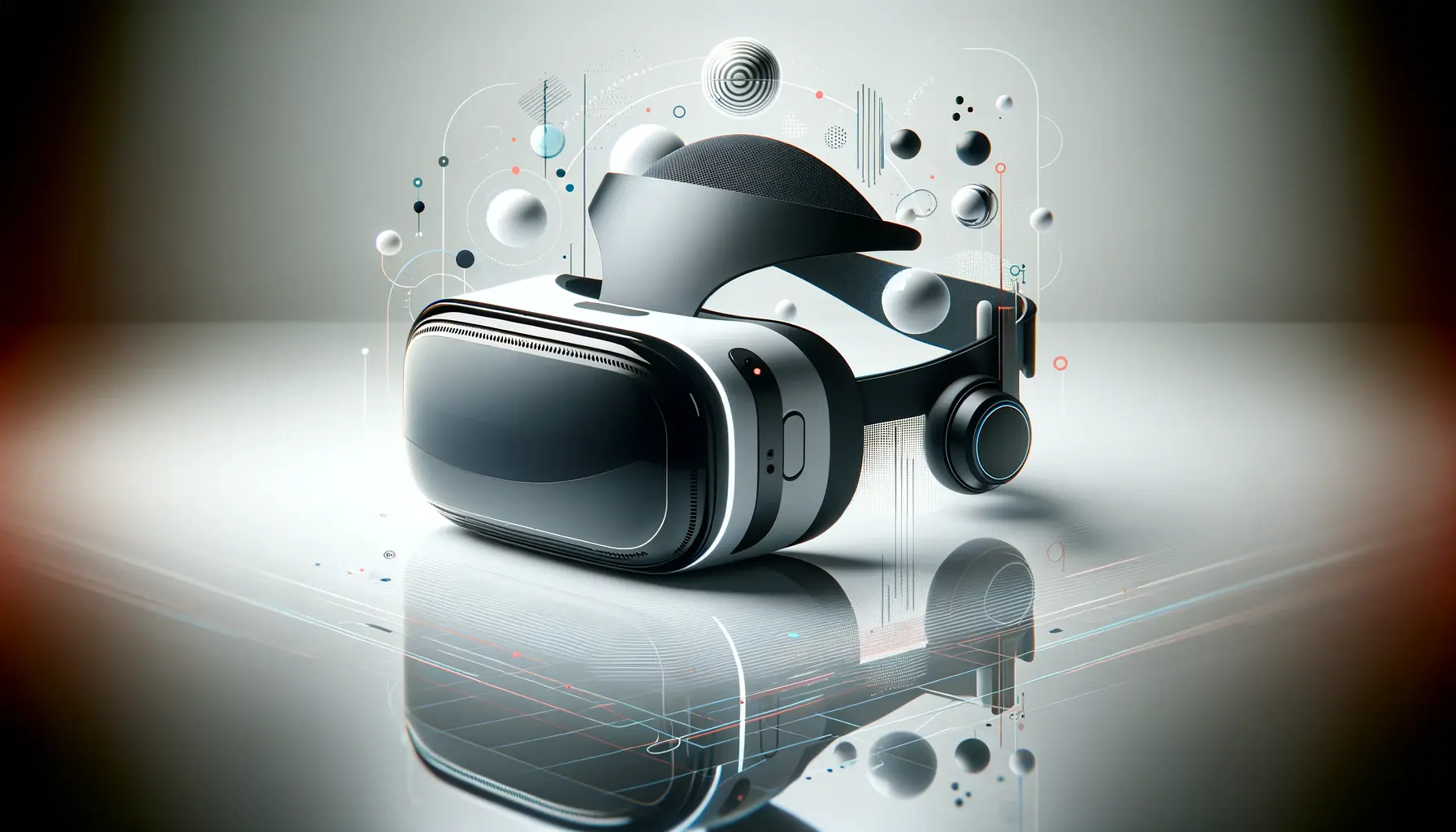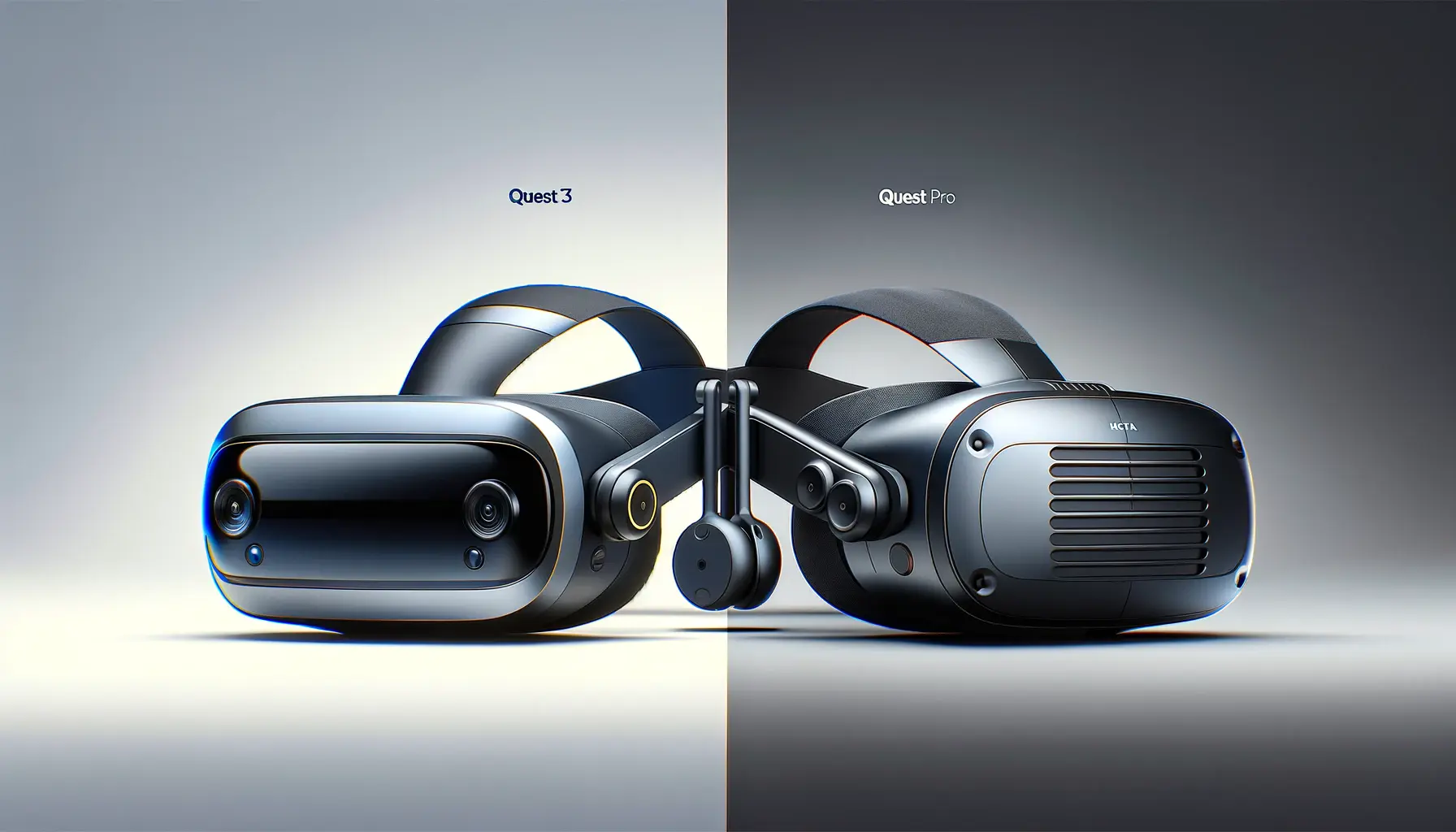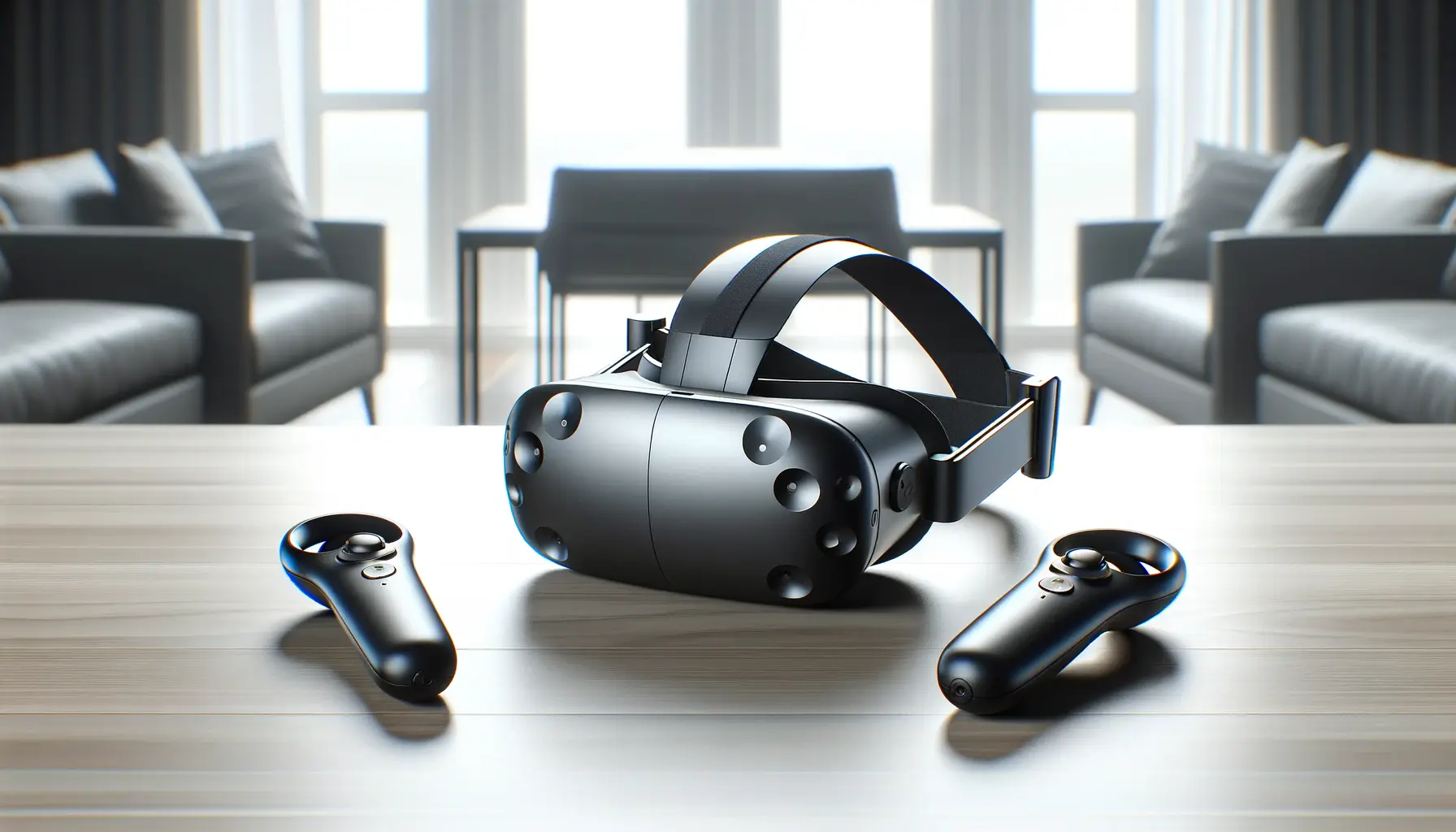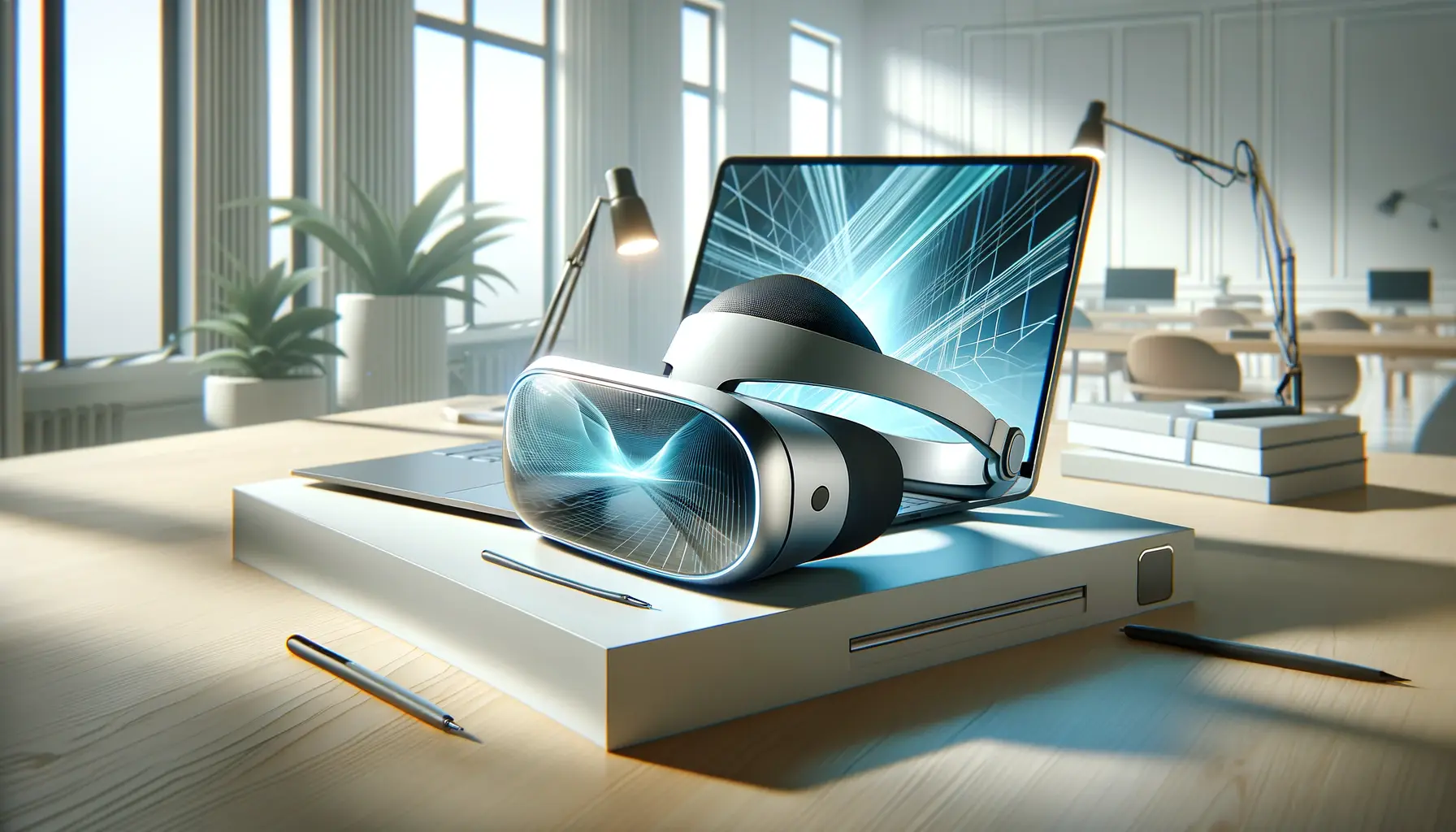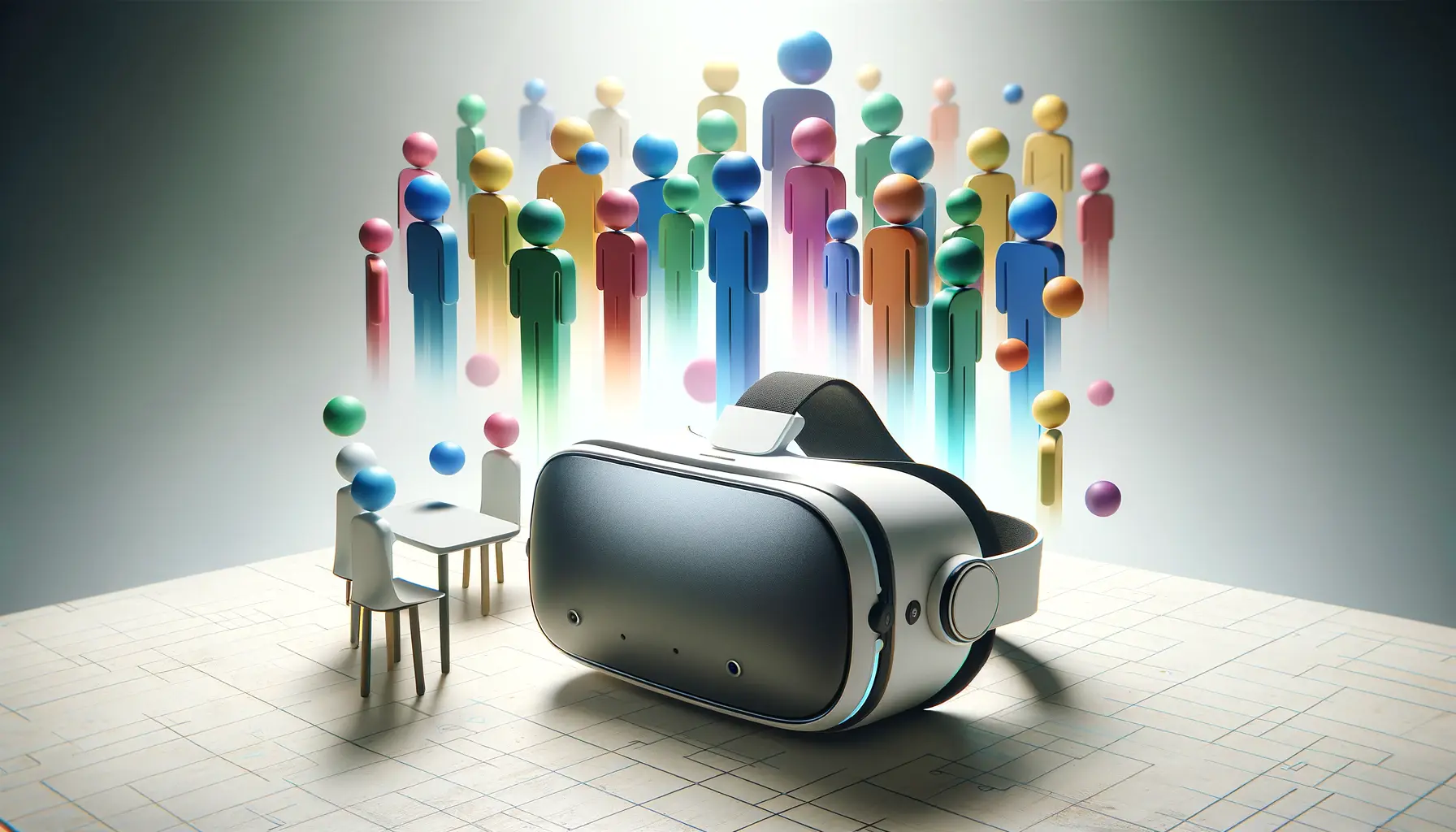The realm of virtual reality (VR) is on the cusp of a transformative era, spearheaded by innovations such as the Meta Quest 3.
This device is not just a successor to its predecessors but a bold leap into what the future holds for VR technology.
The anticipation surrounding the Meta Quest 3 is palpable, fueled by its promise to deliver an unparalleled immersive experience.
As we delve into the intricacies of this advanced headset, it becomes clear that the future of VR is bright, with Meta Quest 3 at the forefront of this exciting journey.
Understanding the significance of the Meta Quest 3 requires a look at its enhanced features and capabilities.
With a focus on improving user experience, the device boasts advancements in display technology, tracking accuracy, and user interface design.
These improvements are not just incremental; they represent a significant leap forward in making VR more accessible and enjoyable for a broader audience.
The Meta Quest 3 is poised to redefine the boundaries of virtual reality, offering users a glimpse into a future where digital and physical realities seamlessly intertwine.
- Evolution of VR Technology
- Advancements in VR Hardware
- Immersive Content Ecosystem
- User Experience and Accessibility
- Challenges and Solutions in VR Adoption
- The Role of Community and Social VR
- Future Trends and Innovations in VR
- Envisioning the Future of VR with Meta Quest 3
- Meta Quest 3: Frequently Asked Questions
Evolution of VR Technology
The Journey from Past to Present
The evolution of VR technology has been a journey of innovation and discovery.
From the early days of bulky headsets and limited interactivity, the industry has witnessed tremendous growth.
The introduction of devices like the Meta Quest 3 marks a significant milestone in this journey.
With each iteration, VR headsets have become more sophisticated, offering better visuals, more accurate tracking, and an overall more immersive experience.
The Meta Quest 3, with its cutting-edge features, represents the culmination of years of research and development, setting a new standard for what’s possible in virtual reality.
One of the key factors driving the evolution of VR technology is the relentless pursuit of realism.
The Meta Quest 3, for instance, leverages advanced optics and processing power to deliver lifelike visuals and smooth, responsive interactions.
This push towards realism is not just about improving the visual fidelity of VR experiences but also about enhancing the sense of presence—the feeling of being truly immersed in a virtual world.
As VR technology continues to evolve, the line between the virtual and the real becomes increasingly blurred, opening up new possibilities for entertainment, education, and social interaction.
Impact on Gaming and Beyond
The impact of advanced VR technology, particularly the Meta Quest 3, extends far beyond gaming.
While gaming remains a primary driver of VR adoption, the potential applications of this technology are vast.
Education, for example, stands to benefit immensely from immersive VR experiences.
Imagine learning history by virtually walking through ancient cities or understanding complex scientific concepts through interactive 3D simulations.
The Meta Quest 3 makes these experiences more accessible and engaging, transforming how we learn and interact with information.
Beyond education, the Meta Quest 3 is also paving the way for innovations in fields like healthcare, where VR can be used for therapy and rehabilitation, and in the workplace, where virtual meetings can simulate the experience of being in the same room with colleagues.
The versatility of the Meta Quest 3 underscores the transformative potential of VR technology, highlighting its role in shaping the future of various industries.
As VR becomes more integrated into our daily lives, the possibilities for innovation and creativity are boundless.
The Meta Quest 3 is not just a gaming device; it’s a gateway to a multitude of VR applications across education, healthcare, and business, showcasing the versatile potential of VR technology.
Advancements in VR Hardware
The Meta Quest 3 embodies the pinnacle of current VR hardware advancements, setting a benchmark for future developments in the field.
This leap forward is characterized by several key features that distinguish the Quest 3 from its predecessors and competitors.
Understanding these advancements provides insight into how VR technology will continue to evolve, enhancing user experiences and expanding the possibilities of virtual immersion.
Enhanced Display and Optics
The display technology and optics of the Meta Quest 3 represent a significant upgrade over previous models.
These improvements are crucial for delivering a more immersive and comfortable VR experience.
Key advancements include:
- Higher Resolution: The Quest 3 offers a higher pixel density, reducing the screen-door effect and making virtual environments more realistic.
- Improved Lens Design: With advancements in lens technology, users enjoy a wider field of view and reduced glare, enhancing the sense of presence in VR.
Superior Tracking and Interaction
Tracking accuracy and interaction capabilities are at the heart of an immersive VR experience.
The Meta Quest 3 excels in these areas through:
- Advanced Hand Tracking: Improved hand tracking technology allows for more nuanced and natural interactions within virtual environments, making the use of controllers optional for certain applications.
- Enhanced Spatial Awareness: The integration of sophisticated sensors and algorithms provides superior spatial awareness, enabling users to move more freely and safely in physical space while immersed in VR.
Processing Power and Battery Life
The Quest 3’s enhanced processing power and battery life are critical for supporting complex VR applications and longer usage sessions.
Highlights include:
- Powerful Custom Chip: A custom-designed processor not only delivers stunning graphics but also ensures efficient power consumption, balancing performance with battery life.
- Extended Battery Life: Innovations in battery technology and power management allow users to enjoy longer VR sessions without the need for frequent recharging.
The Meta Quest 3’s hardware advancements are a testament to the rapid progress in VR technology, offering users a more immersive, realistic, and comfortable virtual reality experience.
Immersive Content Ecosystem
The Meta Quest 3 is not just a marvel of hardware but also a gateway to an expansive and immersive content ecosystem.
This ecosystem is crucial for the VR experience, offering a wide range of applications that go beyond traditional gaming.
The development and availability of diverse content are essential for engaging different user interests and driving the adoption of VR technology.
At the heart of the Quest 3’s content ecosystem are several key components that contribute to its richness and diversity:
- VR Gaming: The backbone of the content ecosystem, VR gaming has evolved with the Quest 3, offering more immersive and complex games. Developers are leveraging the device’s advanced features to create experiences that are more engaging and realistic than ever before.
- Educational Applications: VR’s potential in education is being realized through interactive learning experiences that cater to various subjects and age groups. From virtual field trips to complex scientific simulations, the Quest 3 provides an engaging platform for immersive learning.
- Health and Fitness: The Quest 3 supports a growing library of health and fitness applications, allowing users to engage in virtual workouts, meditation sessions, and wellness activities. These applications make use of the device’s tracking capabilities to provide feedback and guidance, making fitness more interactive and fun.
- Social and Entertainment: Beyond gaming, the Quest 3 offers a range of social and entertainment applications, enabling users to attend virtual concerts, socialize in VR spaces, and explore new forms of storytelling. These experiences are redefining how we connect and entertain ourselves, offering new possibilities for interaction and engagement.
Supporting Developers and Creators
To sustain and expand the content ecosystem, Meta has placed a strong emphasis on supporting developers and content creators.
This support includes development tools, funding programs, and platforms for sharing and distributing VR content.
By fostering a vibrant community of creators, Meta ensures a continuous stream of innovative and diverse content for Quest 3 users.
The immersive content ecosystem of the Meta Quest 3 is a testament to the device’s role in pushing the boundaries of virtual reality.
With a rich library of applications and ongoing support for developers, the Quest 3 is not just a piece of hardware but a comprehensive platform for immersive experiences.
The Meta Quest 3’s content ecosystem is a dynamic and evolving space, offering a wide range of immersive experiences that cater to diverse interests and needs, highlighting the device’s versatility and potential for growth.
User Experience and Accessibility
The Meta Quest 3 stands out not only for its technological advancements but also for its focus on enhancing user experience and accessibility.
A key goal of the Quest 3 is to make virtual reality more approachable and enjoyable for a wider audience.
This commitment is evident in several aspects of the device’s design and functionality, which collectively work to lower the barriers to VR adoption.
Improvements in user experience and accessibility are achieved through:
- Intuitive Interface: The Quest 3 features an interface that is both user-friendly and intuitive, making it easier for newcomers to navigate VR environments. This ease of use encourages exploration and engagement, even for those who may be less tech-savvy.
- Comfort and Ergonomics: Recognizing the importance of comfort for prolonged use, the Quest 3 is designed with ergonomics in mind. Its lightweight construction and adjustable straps ensure a comfortable fit for a variety of head shapes and sizes, reducing fatigue during extended VR sessions.
- Adaptive Technologies: To accommodate users with different needs, the Quest 3 incorporates adaptive technologies, such as adjustable visual settings and support for hearing aids. These features make VR more accessible to individuals with varying sensory abilities, broadening the device’s appeal.
Reducing Motion Sickness
Motion sickness in VR is a concern for many potential users.
The Meta Quest 3 addresses this issue through several measures:
- High Refresh Rates: By supporting higher refresh rates, the Quest 3 minimizes lag and motion blur, which are common triggers for motion sickness in VR.
- Advanced Motion Tracking: Accurate motion tracking ensures that the virtual environment responds seamlessly to the user’s movements, reducing the disconnect that can lead to discomfort.
These improvements in user experience and accessibility are crucial for expanding the reach of VR technology.
By making virtual reality more user-friendly and inclusive, the Meta Quest 3 paves the way for a future where VR is a common part of everyday life, accessible to everyone.
The Meta Quest 3’s emphasis on user experience and accessibility demonstrates a commitment to making VR enjoyable and accessible for a broad audience, contributing to the technology’s mainstream adoption.
Challenges and Solutions in VR Adoption
While the Meta Quest 3 represents a significant leap forward in virtual reality technology, the path to widespread VR adoption is not without its challenges.
These obstacles range from technical limitations to societal perceptions of VR.
However, with every challenge comes a solution, and the industry is actively working to address these issues to ensure the future growth of VR.
Key challenges in VR adoption include:
- Cost: The initial investment in VR hardware can be a barrier for many consumers. While the Meta Quest 3 offers a competitive price point, the cost of high-quality VR experiences remains a consideration for potential users.
- Content Availability: A diverse and compelling content library is essential for attracting and retaining users. Expanding the range of available VR content to include more genres and applications is crucial for broadening the technology’s appeal.
- Technical Requirements: High-performance VR experiences require robust hardware and software. Ensuring compatibility and optimizing performance across a wide range of systems are ongoing challenges for developers.
Solutions Driving VR Forward
To overcome these challenges, several solutions are being implemented:
- Subsidizing Costs: Manufacturers and developers are exploring ways to subsidize the cost of VR hardware through partnerships, bundling with services, or offering financing options to make VR more accessible.
- Content Development: Investment in content creation, including incentives for developers and support for indie creators, is expanding the VR content library. Collaborations with entertainment, education, and other industries are also enriching the ecosystem.
- Technical Innovation: Continuous advancements in VR technology, such as cloud-based VR and AI-driven optimizations, are addressing technical limitations, improving performance, and enhancing the user experience.
Addressing these challenges is essential for the continued growth and acceptance of VR technology.
The Meta Quest 3, with its focus on accessibility, content diversity, and technical excellence, plays a pivotal role in this journey.
As solutions to these challenges are implemented, the potential for VR to become an integral part of our daily lives becomes increasingly tangible.
Overcoming the challenges of VR adoption requires a multifaceted approach, focusing on cost reduction, content expansion, and technical innovation to ensure the technology’s future success.
The Role of Community and Social VR
The emergence of social VR platforms, significantly bolstered by devices like the Meta Quest 3, marks a pivotal shift in virtual reality from a solitary to a communal experience.
The role of community in VR extends beyond mere social interaction; it fosters a sense of belonging, collaboration, and shared experiences in virtual spaces.
This evolution reflects the growing importance of social connectivity in VR, transforming how we perceive and interact within virtual environments.
Key aspects of community and social VR include:
- Virtual Social Spaces: Platforms like VRChat and AltspaceVR offer users the opportunity to meet, interact, and engage in activities with others from around the world. These spaces are not only for socializing but also serve as venues for events, meetings, and collaborative projects.
- Multiplayer Gaming: The Quest 3’s advanced features enhance multiplayer gaming experiences, allowing friends and strangers alike to come together in cooperative or competitive play. This shared gaming experience fosters community building and social interaction within the VR ecosystem.
- Educational and Professional Collaboration: VR technology enables new forms of collaboration in educational and professional settings. Virtual classrooms and meeting rooms facilitate interactive learning and teamwork, regardless of the physical distance between participants.
Expanding the Social VR Experience
To further expand the social VR experience, developers and platform providers are continuously exploring new ways to enhance interaction and engagement within virtual communities.
Innovations include:
- Immersive Communication Tools: Advanced communication tools that simulate face-to-face interactions, including realistic avatars and spatial audio, enhance the sense of presence and connection among users.
- Event Hosting and Participation: Social VR platforms are increasingly used for hosting virtual events, such as concerts, conferences, and art exhibitions, offering new forms of entertainment and learning experiences.
The integration of community and social elements into VR represents a significant advancement in making virtual experiences more meaningful and engaging.
As the Meta Quest 3 and similar devices continue to evolve, the potential for social VR to enrich our digital lives grows, highlighting the importance of community in the virtual realm.
The development of social VR platforms and community-driven experiences is crucial for the evolution of virtual reality, offering new ways for people to connect, collaborate, and share experiences in the digital age.
Future Trends and Innovations in VR
The landscape of virtual reality, epitomized by the Meta Quest 3, is continuously evolving, driven by relentless innovation and the pursuit of more immersive, realistic experiences.
As we look to the future, several trends and technological advancements are poised to shape the next generation of VR, expanding its capabilities and applications.
These developments promise to further blur the lines between the virtual and the real, opening up new possibilities for users and creators alike.
Emerging trends and innovations in VR include:
- Mixed Reality (MR) Integration: The convergence of VR with augmented reality (AR) and mixed reality technologies is creating new hybrid experiences. These MR experiences allow for more seamless interaction with both virtual and physical environments, enhancing the utility and versatility of VR devices.
- Artificial Intelligence (AI) and Machine Learning: AI and machine learning are being integrated into VR to create more dynamic and responsive environments. These technologies enable virtual worlds to adapt to user actions and preferences, offering personalized and engaging experiences.
- Wearable VR Technology: Advances in wearable technology are making VR more accessible and convenient. Future VR devices may become more lightweight and portable, possibly even integrating with everyday clothing and accessories, making immersive experiences more readily available.
Expanding Beyond Entertainment
While gaming and entertainment have been primary drivers of VR adoption, the future of VR extends far beyond these domains.
Upcoming innovations are set to revolutionize a variety of sectors:
- Healthcare: VR is becoming an invaluable tool in therapy, surgical training, and patient education, offering safe and controlled environments for both practitioners and patients.
- Education: Immersive VR experiences are transforming educational methodologies, providing interactive and experiential learning opportunities that enhance understanding and retention.
- Workplace Collaboration: As remote work becomes more prevalent, VR offers innovative solutions for virtual collaboration, enabling more effective and engaging remote team interactions.
The future of VR, as exemplified by the ongoing development and success of the Meta Quest 3, is bright and full of potential.
With each technological breakthrough and innovative application, VR continues to redefine our digital experiences, promising a future where virtual and physical realities are indistinguishably intertwined.
The trajectory of VR technology is marked by continuous innovation, with the Meta Quest 3 leading the charge towards a future where virtual reality becomes an integral part of our daily lives, across entertainment, education, healthcare, and beyond.
Envisioning the Future of VR with Meta Quest 3
The journey through the evolving landscape of virtual reality, particularly with the advent of the Meta Quest 3, paints a vivid picture of a future where the boundaries between the digital and the physical are increasingly blurred.
As we have explored, the Meta Quest 3 is not merely a piece of technology; it is a beacon for the future, heralding a new era of immersive experiences that extend far beyond gaming into education, healthcare, and social interaction.
The device’s advancements in hardware, content ecosystem, and user accessibility underscore a commitment to making VR a mainstay in our daily lives.
The Path Forward
The future of VR, as illuminated by the Meta Quest 3, suggests a trajectory filled with innovation and expansion.
The integration of mixed reality, the application of AI for personalized experiences, and the development of wearable VR technology are just the beginning.
These advancements promise to make VR more accessible, engaging, and integral to our everyday activities.
As we look ahead, the potential applications of VR in healthcare, education, and the workplace highlight the technology’s capacity to transform how we live, learn, and connect with one another.
Challenges to Overcome
Despite the optimistic outlook, the path to widespread VR adoption is not without its hurdles.
Issues such as cost, content diversity, and technical requirements present ongoing challenges.
However, the collective effort of the industry, led by innovations like the Meta Quest 3, is paving the way for solutions that make VR more accessible and appealing to a broader audience.
Through subsidizing costs, enriching the content ecosystem, and advancing technical capabilities, VR is steadily moving towards mainstream acceptance.
A Community-Centric Future
The role of community and social VR experiences stands out as a critical element in the evolution of virtual reality.
The Meta Quest 3 facilitates a platform where users can connect, share, and explore virtual spaces together, fostering a sense of community that transcends physical boundaries.
This social dimension of VR is instrumental in shaping a future where virtual interactions are as meaningful and enriching as their real-world counterparts.
In conclusion, the future of VR with Meta Quest 3 is a testament to the incredible potential of virtual reality to enhance and expand our digital horizons.
As we continue to navigate this exciting landscape, the Meta Quest 3 serves as both a window and a gateway into a future where virtual and physical realities coalesce, offering new possibilities for exploration, connection, and growth.
The journey ahead is filled with promise, and the Meta Quest 3 is leading the way, shaping a future where VR is an integral, enriching part of our daily lives.
Meta Quest 3: Frequently Asked Questions
Explore the most common inquiries surrounding the Meta Quest 3 and uncover insights into its features, capabilities, and more.
Yes, the Meta Quest 3 includes integrated cameras for inside-out tracking, enabling a seamless VR experience without external sensors.
While the Meta Quest 3 has a robust battery life, using battery-saving settings and external power banks can further extend its usage time.
Absolutely, the Meta Quest 3 is designed with an intuitive interface and user-friendly controls, making it ideal for VR newcomers.
The Meta Quest 3 offers an expansive field of view, enhancing immersion by providing a broad visual range within the virtual environment.
With its high refresh rate and precise tracking, the Meta Quest 3 minimizes motion sickness, offering a comfortable VR experience.
Yes, the Meta Quest 3 supports a variety of fitness and exercise apps, making it a versatile tool for virtual workouts.
Indeed, the Meta Quest 3 provides access to social VR platforms and multiplayer games, allowing for rich interactive experiences with others.
The Meta Quest 3 hosts a wide range of educational apps, offering immersive learning experiences across various subjects and disciplines.
